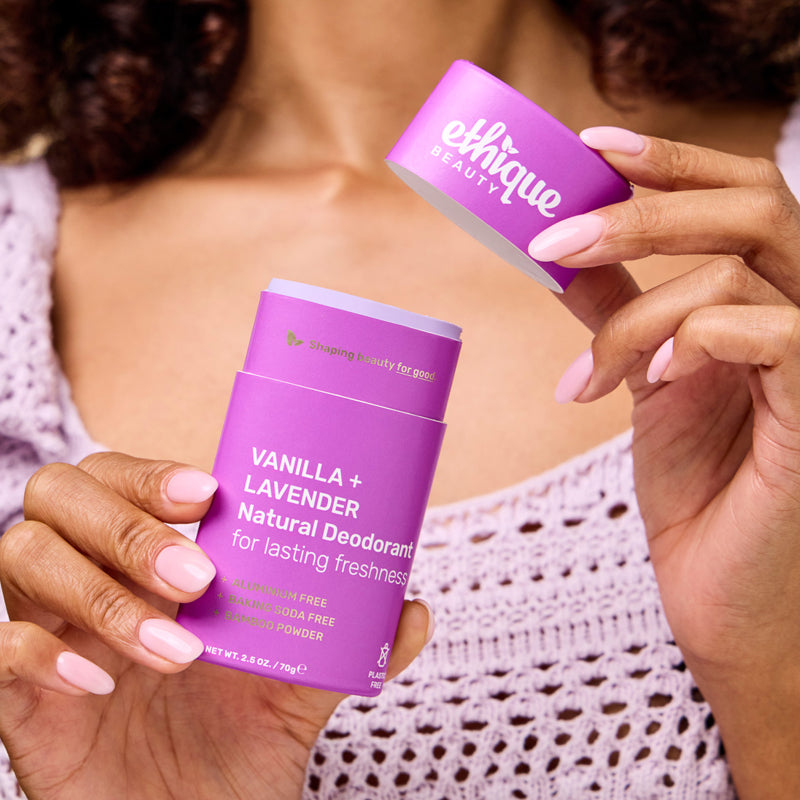When you hear ‘dry skin’ and ‘dehydrated skin’, you might think they’re the same thing... right? Wrong. Skin type is typically genetic, but can be affected by seasons, hormones, and other external factors. We’ll get into the science-y detail below but the TL;DR is that dry and dehydrated skin each have their own identifiers and can be cared for and improved with individual treatment, specific to each. Ready for the 411? Read on! 
What is dry skin?
Dry skin is a skin type that, at the simplest level, doesn’t produce enough oil or sebum. Sebum is a liquid wax everyone's skin naturally secretes which maintains your skin's protective acid mantle, and not having enough of it can also lead to dehydration through trans-epidermal water loss (TEWL). The sebum layer effectively creates an occlusive barrier on the surface of the skin, which prevents evaporation – a bit like applying a face oil over your moisturizer does. So, the key to making your skin feel hydrated and plump if you have dry skin, is to ensure enough hydration (water) stays in the skin and that enough oil is added back to compensate for the short fall.
What is dehydrated skin?
Dehydrated skin is a skin condition where skin is lacking water – not oil. The important thing to realize is that the only thing that actually moisturizes or hydrates skin is water. Butters, oils, and waxes are used to ‘seal’ the water in and prevent TEWL. So those who have dry skin often have dehydrated skin too, but it is quite common for those who have oilier skin to still have dehydration issues, often caused by over washing with harsh cleansers. If you have oily skin but it still feels tight – this is probably what is happening.
How do I know which one I have?
Both dry and dehydrated skin are characterized by flakiness, itchiness, sensitivity, tightness and dullness. You’ll know you have dry skin if it's flaky, itchy or tight-feeling after washing. You'll know you have dehydrated skin if your face tends to be red, look inflamed and your skin is slow to return to its original position when pinched between your fingers.
Help! I have dry skin. What should I do?
Dry skin needs an oil boost. Dry skin can be easily managed with a good moisturizer, and if you prefer, a good face oil over the top (always pop oil over the top of something that contains water to seal in that hydration.) My favorite oils for dry skin include jojoba (as it's technically a liquid wax and similar in composition to our sebum) and apricot kernel, but there are loads out there. Something to look for too is oils that are high in oleic acid as this has studies proving it can be very helpful to those with a drier complexion. Examples of these are avocado oil, moringa oil and shea butter. Test these out slowly though if you have irritated skin, as oleic acid can cause sensitivities. (Conversely, if you struggle with oilier or acne prone skin, oils high in linoleic acid are proven to reduce the bacterial populations that thrive in oilier pores and cause breakouts – like hemp and evening primrose.)
Help! I have dehydrated skin. What should I do?
Dehydrated skin is thirsty and needs water – and the easiest first step is to make sure you’re drinking enough water yourself. Then, add some hydrating products into your routine. A nice step between cleansing and moisturizing is a toner to add in hydration before moisturizing. Choose a toning gel or serum containing humectants (like hyaluronic acid), but ensure you use them on damp skin before popping a creamy moisturizer over the top. And the best ingredient (in my opinion) for dehydrated skin is glycerine. Another humectant like hyaluronic acid, but without the marketing factor, glycerine draws water to itself. Be sure to use all your products on damp skin to help add in more water.

 Impact
Impact Blog
Blog Store Locator
Store Locator


